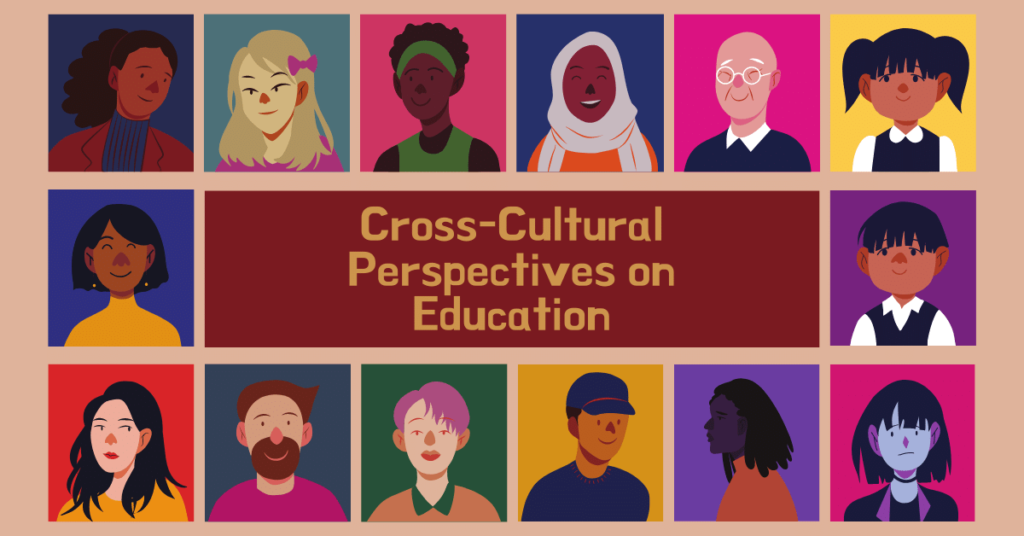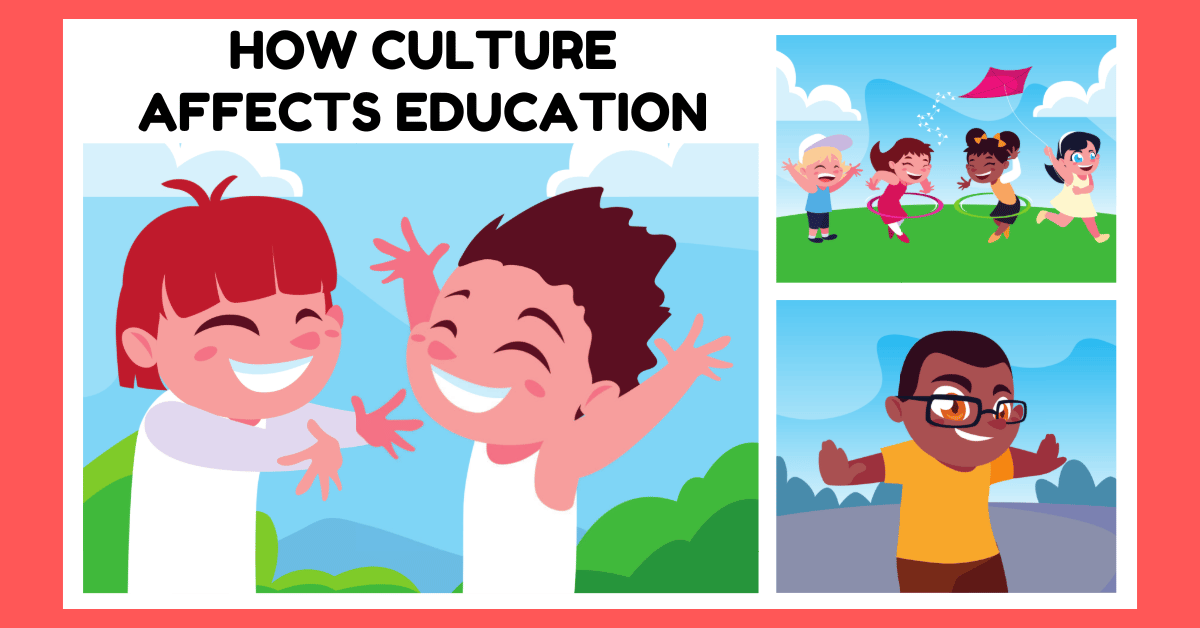How Culture Affects Education
Culture is a complex and multifaceted concept encompassing a particular group of people’s beliefs, values, norms, and practices. It influences every aspect of our lives, from how we communicate to how we raise our children. Education is no exception.
Read More Articles: How Good Is Our Early Learning and Childcare?
Culture profoundly impacts education, shaping everything from the curriculum to the teaching methods to assessing students. For example, memorizing facts and figures in some cultures is essential, while developing critical thinking skills is more important in others. Similarly, some cultures emphasize competition, while others emphasize cooperation.
These cultural differences can pose challenges for students. For example, a student from a culture that values memorization may need help in a classroom emphasizing critical thinking. Similarly, a student from a culture emphasizing competition may need help to adjust to a school emphasizing cooperation. Understanding these challenges is essential to creating an inclusive learning environment.
Educators play a crucial role in understanding their students’ cultural backgrounds and adapting their teaching methods accordingly. By doing so, they can empower themselves to create a more inclusive and equitable learning environment for all students.
Some specific examples of how culture can affect education:
Culture and Education
Culture and education are two closely intertwined concepts. Culture shapes people’s thinking, feelings, and behaviour and profoundly impacts their learning. Education, in turn, can transmit culture from one generation to the next and challenge and change it.
There are many ways in which culture can affect education. For example, culture can influence:
- The values that are taught in schools
- The way that teachers interact with students
- The way that students learn
- The way that students are assessed
For example, memorizing facts and figures is essential in some cultures, while developing critical thinking skills is more important in others. Similarly, some cultures emphasize competition, while others emphasize cooperation. These cultural differences can lead to very different educational experiences for students.
Educators must know their students’ cultural backgrounds and adapt their teaching methods accordingly. By doing so, they can create a more inclusive and equitable learning environment for all students.
Here are some specific examples of how culture can affect education:
- In some cultures, it is considered impolite to ask questions, while in others, it is considered essential to be inquisitive. This can lead to different expectations about student participation in class.
- In some cultures, respect for authority figures is essential, while independence is considered more important in others. This can lead to different expectations about student behaviour in the classroom.
- In some cultures, memorizing facts and figures is considered necessary, while developing critical thinking skills is more important in other cultures. This can lead to different expectations about what students should learn in school.
It is important to note that culture is not static. It is constantly changing and evolving. As a result, the way in which culture affects education is also continually changing and evolving. Educators must be aware of these changes and adapt their teaching methods accordingly.
By understanding their students’ cultural backgrounds and adapting their teaching methods accordingly, educators can create a more inclusive and equitable learning environment for all students.
*Cultural Influences on Education**
Culture is a complex and multifaceted concept encompassing a particular group of people’s beliefs, values, norms, and practices. It influences every aspect of our lives, from how we communicate to how we raise our children. Education is no exception.
Culture profoundly impacts education, shaping everything from the curriculum to the teaching methods to assessing students. For example, memorizing facts and figures in some cultures is essential, while developing critical thinking skills is more important in others. Similarly, some cultures emphasize competition, while others emphasize cooperation.
These cultural differences can lead to very different educational experiences for students. For example, a student from a culture that values memorization may need help in a classroom emphasizing critical thinking. Similarly, a student from a culture emphasizing competition may find adjusting to a school emphasizing cooperation easier.
Educators must know their students’ cultural backgrounds and adapt their teaching methods accordingly. By doing so, they can create a more inclusive and equitable learning environment for all students.
Here are some specific examples of how culture can influence education:
- Curriculum: The curriculum is the content that is taught in schools. The values and beliefs of the culture shape it. For example, in a culture that values individualism, the curriculum may emphasize the importance of self-reliance and personal achievement. In a culture that values collectivism, the curriculum may emphasize the importance of cooperation and social responsibility.
- Teaching methods: The teaching methods used in schools are also influenced by culture. For example, teachers may use lectures and drills to teach new material in a culture that values rote memorization. Teachers may use more interactive methods, such as discussions and problem-solving activities, in a culture that values critical thinking.
- Assessment: The way that students are assessed is also influenced by culture. For example, in a culture that values standardized testing, students may be required to take high-stakes tests to demonstrate their learning. In a culture that values more holistic assessments, students may be assessed through various methods, such as portfolios, projects, and presentations.
It is crucial to understand that culture is not a static entity. It is constantly changing and evolving. As a result, the way in which culture affects education is also continually changing and evolving. Educators must be aware of these changes and adapt their teaching methods accordingly, fostering a culture of continuous learning and adaptation.
By understanding their students’ cultural backgrounds and adapting their teaching methods accordingly, educators can create a more inclusive and equitable learning environment for all students.
Education and Cultural Diversity
Education plays a pivotal role in promoting and celebrating cultural diversity. Through education, we can ensure all students feel welcome, respected, and represented, enriching our communities with various perspectives, experiences, and traditions.
There are many ways to incorporate cultural diversity into education. One crucial step is ensuring the curriculum is inclusive and representative of all cultures. This means including books, materials, and activities that reflect students’ diverse backgrounds and teaching about different cultures respectfully and accurately.
Another critical step is to create a welcoming and supportive classroom environment where all students feel valued and respected. This means being open to different perspectives and experiences and willing to learn from students. It also means challenging stereotypes and prejudice and creating a space where all students can feel safe and comfortable being themselves.
Educating students about cultural diversity is essential for preparing them to live and work in a globalized world. By understanding and appreciating different cultures, students can develop the skills to communicate effectively, resolve conflicts peacefully, and work collaboratively with people from all backgrounds.
Here are some specific examples of how education can promote cultural diversity:
- Including diverse perspectives in the curriculum: This can be done through textbooks, articles, and videos representing various cultures. It can also be done by inviting guest speakers from different backgrounds to share their experiences with students.
- Creating a welcoming and supportive classroom environment means creating a space where all students feel respected and valued. It also means being open to different perspectives and experiences and being willing to learn from students.
- Challenging stereotypes and prejudice: This can be done through classroom discussions, activities, and projects. It is also important to model respectful behaviour and language when interacting with students from different cultures.
- Teaching about different cultures: This can be done through history, geography, and social studies classes. Incorporating cultural diversity into other subjects, such as math, science, and art, is also essential.
Promoting cultural diversity in education can help create a more just and equitable society.
Impact of Culture on Education
Culture has a profound impact on education. It shapes how people think about the world, learn, and interact with others. Education, in turn, can be used to transmit culture from one generation to the next, and it can also be used to challenge and change culture.
How Culture Impacts Education
Culture influences education in several ways, including:
- Values: A culture’s values can significantly impact education. For example, students may be more likely to be encouraged to express their opinions and ideas in a culture that values individualism. In a culture that values collectivism, students may be more likely to be expected to conform to the group.
- Beliefs: A culture’s beliefs can also shape how education is conducted. For example, in a culture that believes that all children are capable of learning, students may be more likely to be given opportunities to succeed. In a culture that believes only confident children can learn, students may be more likely to be tracked into different educational programs.
- Norms: A culture’s norms can influence how education is conducted. For example, in a culture where it is considered impolite to ask questions, students may be less likely to ask for help when needed. Students may be more likely to defer to the teacher’s authority in a culture where it is essential to respect authority.
- Practices: A culture’s practices can also affect how education is conducted. For example, in a culture where it is customary for children to help with household chores, students may be more likely to be expected to participate in classroom tasks. In a culture where it is customary for children to be independent, students may be more likely to be expected to work on their own.
The Importance of Understanding Cultural Influences on Education
Educators must know their students’ cultural backgrounds and adapt their teaching methods accordingly. By doing so, they can create a more inclusive and equitable learning environment for all students.
For example, a teacher who works with students from a culture that values collectivism may need to adjust their teaching style to be more collaborative and provide more opportunities for students to work together on projects and assignments.
Culture is a complex and multifaceted concept that can significantly impact education. By understanding their students’ cultural backgrounds and adapting their teaching methods accordingly, educators can create a more inclusive and equitable learning environment for all students.
The Role of Culture in Education
Culture plays a vital role in education. It shapes how people think about the world, learn, and interact with others. Education, in turn, can transmit culture from one generation to the next and challenge and change it.
How Culture Influences Education
Culture influences education in several ways, including:
- Values: A culture’s values can significantly impact education. For example, students may be more likely to be encouraged to express their opinions and ideas in a culture that values individualism. In a culture that values collectivism, students may be more likely to be expected to conform to the group.
- Beliefs: A culture’s beliefs can also shape how education is conducted. For example, in a culture that believes that all children are capable of learning, students may be more likely to be given opportunities to succeed. In a culture that believes only confident children can learn, students may be more likely to be tracked into different educational programs.
- Norms: A culture’s norms can influence how education is conducted. For example, in a culture where it is considered impolite to ask questions, students may be less likely to ask for help when needed. In a culture where it is essential to respect authority, students may be more likely to defer to the teacher’s authority.
- Practices: A culture’s practices can also affect how education is conducted. For example, in a culture where it is customary for children to help with household chores, students may be more likely to be expected to participate in classroom tasks. In a culture where it is customary for children to be independent, students may be more likely to be expected to work on their own.
The Importance of Understanding Cultural Influences on Education
- Educators must know their students’ cultural backgrounds and adapt their teaching methods accordingly. By doing so, they can create a more inclusive and equitable learning environment for all students.
- For example, a teacher who works with students from a culture that values collectivism may need to adjust their teaching style to be more collaborative and provide more opportunities for students to work together on projects and assignments.
Culture is a complex and multifaceted concept that can significantly impact education. By understanding their students’ cultural backgrounds and adapting their teaching methods accordingly, educators can create a more inclusive and equitable learning environment for all students.
*The Role of Culture in Shaping Educational Outcomes**
Culture plays a significant role in shaping educational outcomes. It influences the way that students learn, the way that teachers teach and the way that schools are organized.
How Culture Influences Educational Outcomes
Culture influences educational outcomes in several ways, including:
- Values: A culture’s values can influence the way that students learn. For example, students may be more likely to be encouraged to express their opinions and ideas in a culture that values individualism. In a culture that values collectivism, students may be more likely to be expected to conform to the group.
- Beliefs: A culture’s beliefs can also shape how education is conducted. For example, in a culture that believes that all children are capable of learning, students may be more likely to be given opportunities to succeed. In a culture that believes only confident children can learn, students may be more likely to be tracked into different educational programs.
- Norms: A culture’s norms can influence how education is conducted. For example, in a culture where it is considered impolite to ask questions, students may be less likely to ask for help when needed. Students may be more likely to defer to the teacher’s authority in a culture where it is essential to respect authority.
- Practices: A culture’s practices can also affect how education is conducted. For example, in a culture where it is customary for children to help with household chores, students may be more likely to be expected to participate in classroom tasks. In a culture where it is customary for children to be independent, students may be more likely to be expected to work on their own.
Culture plays a significant role in shaping educational outcomes. By understanding their students’ cultural backgrounds and adapting their teaching methods accordingly, educators can create a more inclusive and equitable learning environment for all students.
Cross-Cultural Perspectives on Education
Education is a complex and multifaceted phenomenon shaped by various factors, including culture. Different cultures have different values, beliefs, and norms that influence education.
How Culture Influences Education
Culture influences education in several ways, including:
- The goals of education: Different cultures have different goals for education. In some cultures, education aims to prepare students for the workforce. In other cultures, education seeks to develop the whole person.
- The content of education: The content of education varies from culture to culture. In some cultures, the curriculum heavily focuses on academic subjects like math, science, and history. The curriculum is more balanced in other cultures and includes art, music, and physical education subjects.
- The methods of teaching: The methods of teaching also vary from culture to culture. In some cultures, teachers are more authoritarian and expect students to memorize facts. In other cultures, teachers are more collaborative and encourage students to think critically.
- The assessment of learning: How students are assessed also varies from culture to culture. In some cultures, students are assessed through standardized tests. In other cultures, students are evaluated through various methods, such as portfolios, projects, and presentations.
Cross-Cultural Perspectives on Education
Different cultures have different perspectives on education. For example, in some cultures, education is seen as a privilege. In other cultures, education is seen as a right.
Awareness of the different cultural perspectives on education is essential when working with students from diverse backgrounds. By understanding their students’ cultural backgrounds, educators can create a more inclusive and equitable learning environment for all students.
Culture plays a significant role in shaping education. By understanding their students’ cultural backgrounds and adapting their teaching methods accordingly, educators can create a more inclusive and equitable learning environment for all students.
Conclusion:
Culture profoundly influences education, permeating every aspect, from curriculum design to teaching methods and assessment practices. By understanding their students’ cultural contexts, educators can create inclusive and equitable learning environments that honour diverse perspectives and experiences.
Embracing cultural diversity in education goes beyond mere representation; educators must critically examine their cultural biases, adapt their teaching approaches, and incorporate culturally responsive materials and activities. Moreover, recognizing the role of culture in education empowers students to develop cultural competence, empathy, and a deep appreciation for the richness of human diversity. Through culturally responsive teaching, we can unlock the full potential of all learners and foster a more just and equitable society where every student feels valued and supported in their educational journey.


